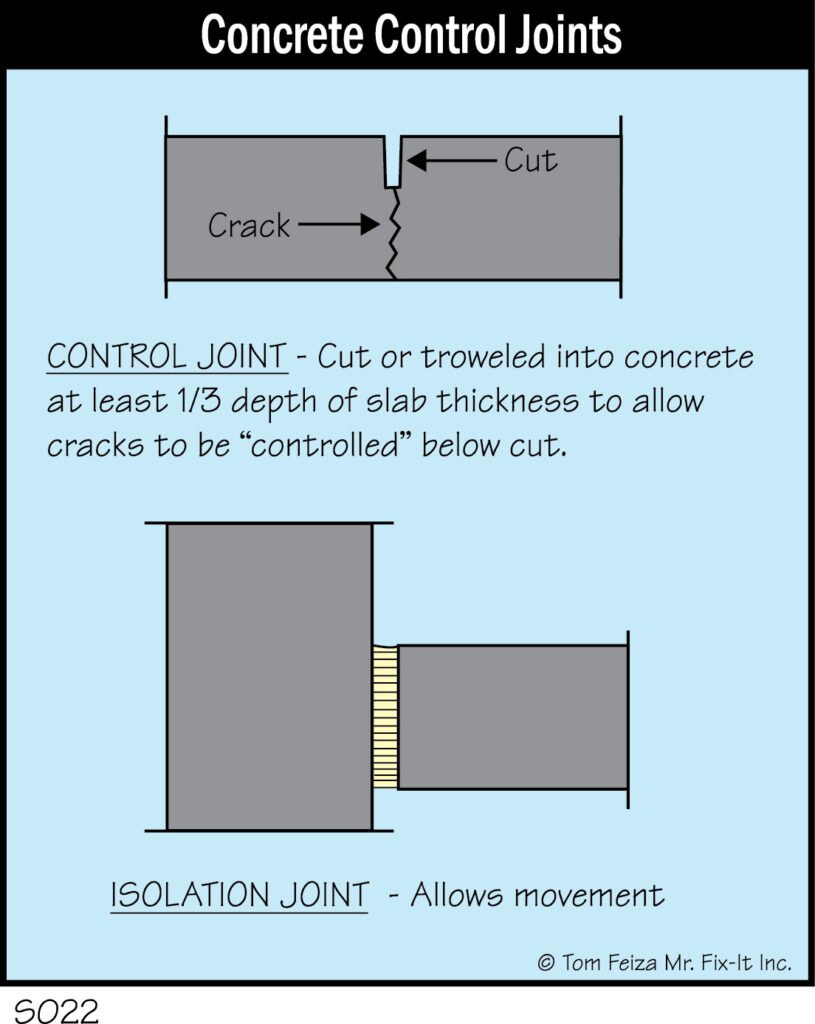Quick Tip #63
You know the old saying: two things in life are certain – death and taxes. Well, I can add a third certainty to the mix: all poured concrete will crack.
Concrete shrinks about 5/8 inch in 100 feet of length. And that’s assuming the concrete is properly formulated, placed, and cured under the right temperature and moisture conditions. Add more water, raise the temperature or change any other variables, and the concrete will shrink even more.
To contend with shrinkage, workers place control joints and expansion joints in concrete. A control joint is easy to see – it’s a cut in the surface or a groove trowled into the surface. This cut or groove weakens the matrix and promotes cracking, so the shrinkage crack should occur in the control joint.
Expansion joints are soft spacers used between concrete and other construction materials. They allow shrinkage to occur and let the soft material fill the void. Expansion joints also allow for ongoing relative motion between surfaces.
So if you see cracks in a concrete surface, you should realize that often, it’s just normal shrinkage. If the concrete is heaving or lifting, though, there may be a problem.


